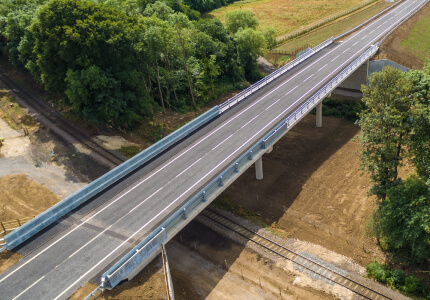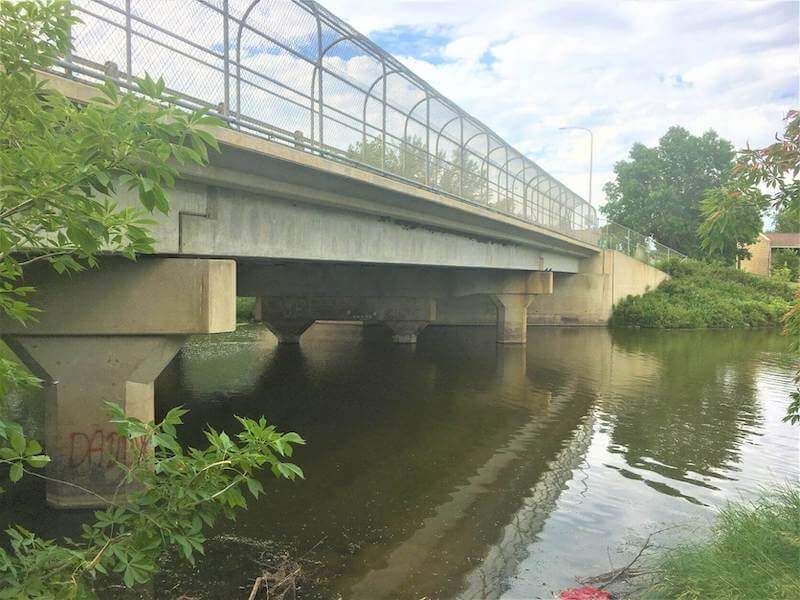Bridge inspections are a critical component of transportation infrastructure management. They ensure the safety of the traveling public, provide essential data on the condition of bridges and help prevent catastrophic failures. The data gathered from inspections guide states and owners in maintaining structural health, allowing for timely interventions to small problems before they snowball into significant deficiencies.
Bridge inspections are not arbitrary—they are mandated by the Federal Highway Administration (FHWA) under the National Bridge Inspection Standards (NBIS). Bridges that qualify for inspection under the NBIS definition are subject to rigorous review to ensure they meet the stringent requirements set forth for public safety. Bridge failures, although rare, can have devastating consequences, and regular inspections are the first line of defense against such events.
Ulteig’s Commitment to Bridge Integrity
From routine inspections to total bridge replacements, Ulteig provides transportation planning, design and structural engineering services. Our team members maintain certification and training for NBIS routine bridge inspection, fracture critical bridge inspections and scour analysis/plans of action. We also have in depth expertise in bridge design and load rating; wall inspection and design; and ancillary structure design and inspection.
A Closer Look at Bridge Inspection
Bridge inspections can be categorized into seven types:
- Initial: Conducted within 90 days of a bridge’s opening, focusing on identification and data collection of permanent elements.
- Routine: Performed every 24 months, or more frequently if needed, to monitor condition and inventory changes.
- Damage: Unscheduled inspections to assess damage from unforeseen events, like vehicular impacts.
- In-Depth: Targeted inspection of specific bridge components.
- Non-Redundant Steel Tension Member (formerly Fracture Critical): Hands-on inspections for elements whose failure could lead to bridge collapse.
- Underwater: Inspection of submerged structural components and evaluation of waterway conditions.
- Special: Inspections scheduled at the owner’s discretion, such as post-rehabilitation follow-ups.
Let’s take a closer look at what a typical day might entail for a bridge inspector.
The Morning Briefing
The day kicks off with a safety briefing. The team reviews the inspection plan, discusses potential hazards, and ensures all safety protocols are in place. Today’s task is a routine inspection of a large suspension bridge, an intricate weave of steel and concrete that demands careful scrutiny.
On-site Arrival and Initial Survey
Upon reaching the bridge, the inspector conducts an initial visual survey from a distance. They note the traffic conditions, weather and any immediate visible irregularities. The inspection van is equipped with everything needed for the day, from harnesses and ropes to NDT (Non-Destructive Testing) equipment.
Deploying Advanced Techniques
This bridge requires an in-depth inspection, which includes a Non-Redundant Steel Tension Member review. The inspector, trained in the Society of Professional Rope Access Technicians (SPRAT) techniques, gears up for a hands-on examination. They descend on ropes to closely inspect the critical elements, looking for signs of fatigue, corrosion or other damage.
Inspecting Underwater
Underwater inspections are a critical component of the comprehensive bridge inspection process but are handled separately due to their specialized nature. Typically, if underwater inspections are required on the same bridge, they are scheduled for the following day or conducted concurrently by a separate team of ADCI-certified commercial diver engineers. This ensures detailed attention and safety without overextending the primary inspection team.
Closing the Day: Reporting and Analysis
As the day winds down, the bridge inspector returns to the office to compile the day’s data. They analyze their findings, comparing them against historical data to track the bridge’s condition over time. Any critical issues are flagged for immediate attention, while other observations are integrated into a comprehensive report for the bridge owners.
Before calling it a day, the inspector takes time to reflect on the inspection, considering the health of the structure and the implications of their findings. They also begin to prepare for the next day’s inspection, whether it’ll be another routine check or an urgent damage assessment.
Structural Engineering Services to Protect North America’s Bridges
Ulteig is dedicated to meticulous, holistic bridge inspection, continually developing our capabilities to offer comprehensive structural engineering services. Our vision is not just to inspect but to integrate rehabilitation design, new construction design and connect all of Ulteig’s capabilities to offer clients a complete service package for their infrastructure needs.
Contact Ulteig today to discover how we can support your critical transportation infrastructure.




